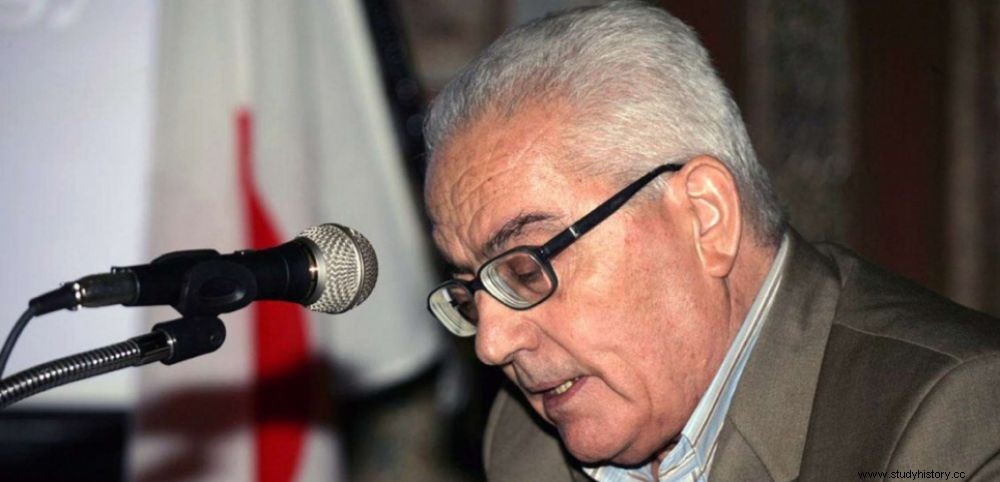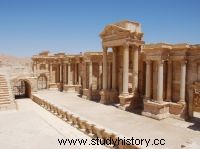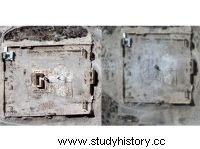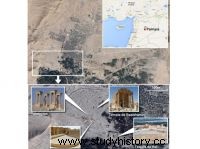 Khaled Asaad (or Khaled al-Assaad), 83, the former director of the Department of Antiquities and Palmyra museums.
Khaled Asaad (or Khaled al-Assaad), 83, the former director of the Department of Antiquities and Palmyra museums. TESTIMONY. Jean-Baptiste Yon is a French archaeologist and epigraphist from the HISoMA laboratory (History of the Ancient Worlds) of the Maison de l'Orient et de la Méditerranée at the University of Lyon 2, has worked for a long time in Palmyra, the spectacular Greco-Roman site located in eastern Syria. In August 2015, for Sciences et Avenir , he returned to the assassination by Daesh (IS), on August 18, 2015 in atrocious conditions, of Khaled Asaad (or Khaled al-Assaad), 83, the former director of the Department of Antiquities and Museums of Palmyra, as well as the destruction of ancient temples and the trafficking of antiquities. War crimes once again denounced by the director of Unesco, Irina Bokova.
Science and Future:Khaled Asaad had been running Palmyra Antiquities since 1963. Kidnapped and held captive by Daesh (IS) militants for a month, he was murdered in public in Palmyra on August 18. For several years you had worked with him. How did you know him?
Jean-Baptiste Yon: We had met in 1996, when I was in Syria as part of my doctoral thesis on the society of Palmyra in the first centuries of our era. Khaled Asaad had immediately helped me find the Greek and Latin inscriptions engraved on the stones of the ancient city. Then we worked together until 2003, when he retired. Afterwards, we saw each other regularly because he continued to come frequently to the Palmyra museum. The last article we co-authored dates back to 2012.
Have you heard from her recently?
I went to Syria until 2010, when it was no longer possible for us to go there. My most recent contacts were mainly with the son of Khaled Asaad. Walid Asaad had in fact succeeded his father as head of Antiquities in Palmyra. Due to the situation in Syria, the last exchanges were rather brief. We do not go into details for security reasons.
What do you know about what happened there and how did you find out?
I was first alerted to Khaled Asaad's disappearance by a quick phone call from a Norwegian colleague. But it was not until the next morning that I learned in what abominable conditions he had lost his life [Editor's note:Khaled Asaad was beheaded, then his body exposed in public]. In the same way, I learned that his son had managed to leave the city. You should know that it is almost impossible today to obtain information on the spot. The living conditions of the inhabitants of Palmyra are very difficult, and we cannot communicate directly. There is practically no electricity, telephone and a fortiori of the Internet. To give news - which is not without risk - you have to leave the city and go to certain localities.
Why did you attack Khaled Asaad?
First of all, Khaled Asaad was an emblematic figure of Palmyra and Syrian Antiquities. But he also belonged to a very large local family. Like many Syrian officials who have made a career, in the eyes of the Islamists of Daesh, he had above all links with the Damascus regime. [Editor's note:a handwritten sign linked to the body of the victim accused him of being loyal to the Baath party, the regime of the Alawite government of Bashar Al Assad]. This crime is a way of warning anyone against any possible resistance in Palmyra.
Khaled Asaad, had spent decades studying the archaeological treasures of Palmyra. According to several testimonies, He would have been killed for having refused to say where the statues of the city had been sheltered. Could you tell us what antiques these were?
Since the 1930s, many archaeological discoveries have taken place in Palmyra. Also an important museum had been erected on the spot. On the other hand, in recent years, several tombs with many sculptures had been unearthed around the ancient city. With in particular the exhumation of magnificent funerary busts. In addition to the objects exhibited in the museum and those kept in the reserves, all these works have been placed under cover. Thousands of objects and sculptures of all sizes that absolutely had to be saved. And this evacuation was done until the last hours before the fall of the city and the arrival of Daesh on May 20, 2015.
Just a few days after this assassination, Daesh dynamited the Ballshamin temple, a shrine of the 1
st
century of our era and Sunday August 30, that of Bel. Why is Daesh targeting heritage so much?
The communication of this group is very strong. We must not forget either that it is also addressed to the local population... From what I was told on the spot, the argument given to the Palmyrenes by Daesh is the following:"When the government army bombs a place and there are 100 dead, no one cares. When all we have to do is blow up a statue to get all the headlines" .
At the same time, Daesh also seems to be enriching itself through antiquities. In the United States, the FBI has just issued a warning to potential buyers. What do you know of the traffic that would currently be taking place in the area?
It is extremely difficult to know what is really going on. Even if a lot of things are said. Among our privileged sources are, among others, the alerts of the Syrian Ministry of Antiquities. We know, for example, that a certain number of objects have been found in Lebanon. The Turkish border is also very porous. But you should also know that after 2010 and even before the arrival of Daesh, thefts of archaeological pieces had already been reported in Palmyra, then under the control of regime forces. Of course, these are disproportionate in terms of volume with the traffic and the scale of the current lootings which are known to provide financial support to the terrorist organization*. I am appalled by everything that is happening. I was hoping Khaled Asaad had left town. He took huge risks by staying put. Risks of which he was perfectly aware. All this is very painful.
* According to Matthew Levitt, an expert with the Washington Institute, who has been analyzing the financing of terrorist groups in the Middle East for several years, antiquities trafficking could become the second source of income for these groups (those coming from oil being down due to coalition airstrikes). Antiques from Syria are said to have made an increasing appearance on the antiques market in London.
To see:
More than 2000 photos of the French Archaeological Mission in Palmyre from 1901 to 1939 are also available. Part of the archeology photo library and the MédiHAL archives of the Institut Français du Proche-Orient (Ifpo) have been put online. Click here to access it.
The city of Palmyra in Syria



